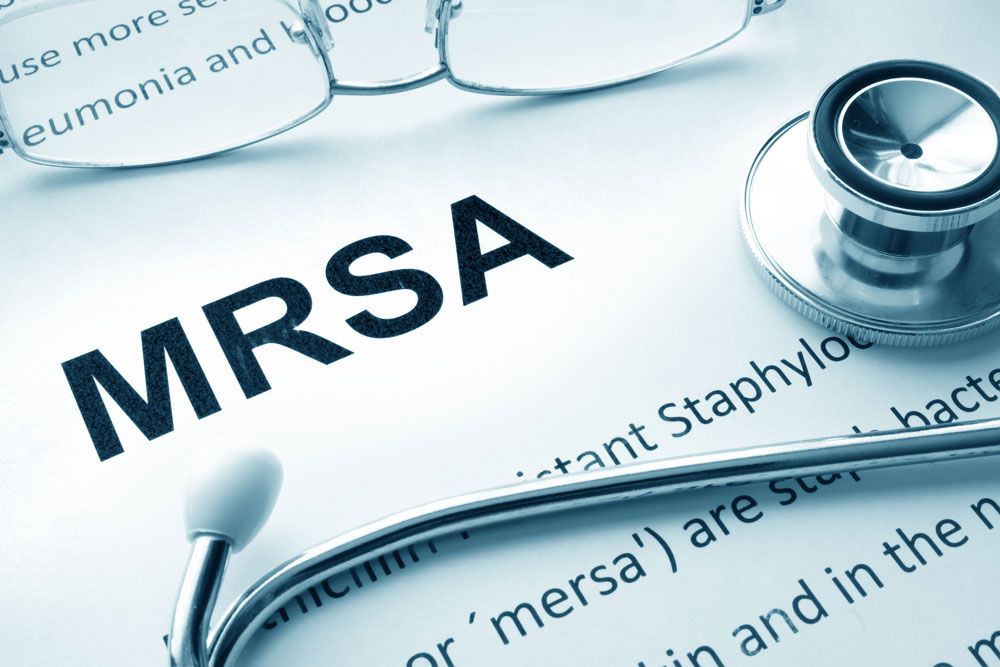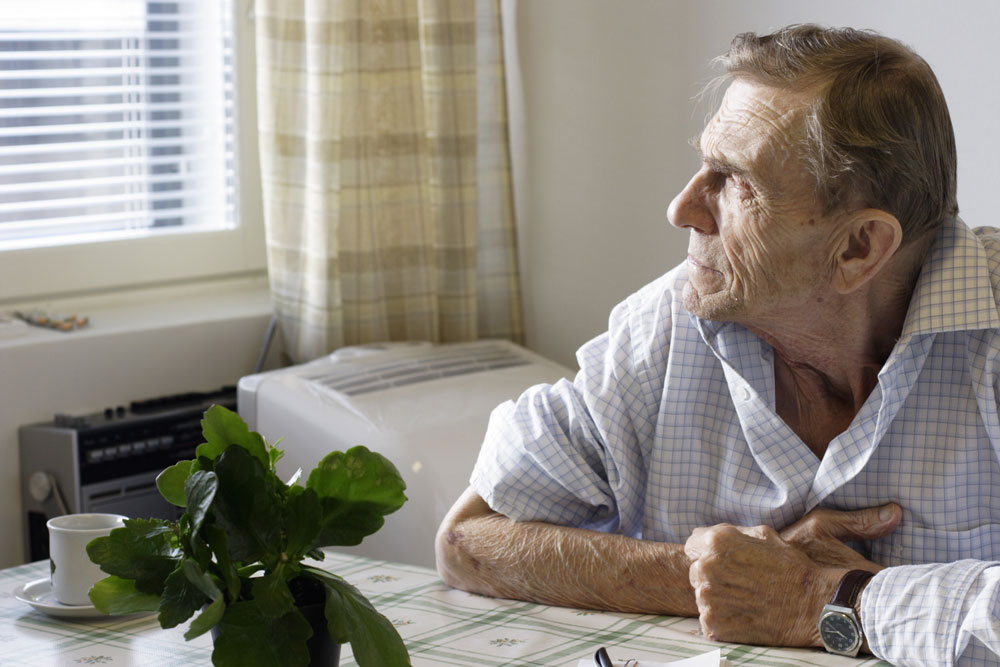Infection spread
This article is written based on Swedish conditions. Hopefully, it can inspire interested parties from other countries.
Multiresistant bacteria and viral infections pose risks to life and health. It is of paramount importance to take measures to reduce the spread of multi-resistant bacteria and try to preserve the effectiveness of our current antibiotics. This battle requires cooperation at all levels of care, from prescribers of antibiotics to patients and healthcare professionals. By taking these measures seriously, we can hopefully slow the spread and save lives. Infection prevention is an ongoing effort.
 Foto: Mostphotos
Foto: MostphotosMulti-resistant bacteria
An increasing number of people are carriers of multi-resistant bacteria. In the wrong context, these bacteria can cause death for those who contract them. We are all carriers of bacteria and multi-resistant bacteria pass through our hands, airways, and other parts of the body regularly. We contract these bacteria when we shake hands, handle money, use public restrooms, and many other ways. Sometimes we get infected with multi-resistant bacteria in connection with trips abroad.
When visiting nursing homes where many with a weakened immune system live, we bring the bacteria there. Many people are healthy carriers. The greatest risks arise when the bacteria come into contact with our body fluids. If the resident ingests infectious bacteria or viruses through food, the respiratory tract, or in connection with wound care, it can have serious consequences for the resident.
The bacteria we most often hear about are ESBL (Extended spectrum beta-lactamases) which are multi-resistant intestinal bacteria, MRSA (Methicillin-resistant Staphylococcus aureus) and VRE (Vancomycin-resistant enterococci). Another unpleasant and difficult intestinal infection that can spread between care recipients is Clostridium difficile. It is often caused by antibiotic treatment and affects people with a weakened immune system. When these different bacteria cause disease, they become difficult to treat with antibiotics, which in the worst case can lead to death.
Often there are one or more residents who are carriers of some form of multi-resistant bacteria. The operation has a responsibility to prevent the infection from spreading to other residents. If several residents have been infected with multi-resistant bacteria, infection tracing can be done on residents and employees.
It is good to register when someone falls ill with diarrhea or vomiting. Both residents and staff should be followed up. To reduce the risk of infection, it is good to contact hygiene expertise. Compliance with basic hygiene routines is the best way to prevent the spread of infection, but sometimes other measures can be taken.
Why are multi-resistant bacteria a threat?
Difficult-to-treat infections: When a person becomes infected with multi-resistant bacteria, it can be difficult to find a suitable antibiotic that works. This leads to prolonged disease courses and an increased risk of complications.
Increased mortality: Infections caused by multi-resistant bacteria have higher mortality compared to infections that can be treated with antibiotics. This means that multi-resistant bacteria can be life-threatening.
Hospital infections: Multi-resistant bacteria often spread within care environments, making patients who are already sick especially vulnerable. This leads to increased care costs, increased suffering, and longer hospital stays.
Lack of treatment options: Since multi-resistant bacteria are resistant to many different antibiotics, there are few alternatives left to treat infections. This increases the risk that infections cannot be controlled.
Measures to combat multi-resistant bacteria
Rational antibiotic use: Antibiotic prescribers are urged to use these drugs with the utmost caution and only when absolutely necessary.
Improved hygiene: Good hand hygiene and thorough cleaning of care equipment are crucial to prevent the spread of multi-resistant bacteria within hospital environments.
Screening and isolation: Patients suspected of being carriers of multi-resistant bacteria can be screened and isolated to prevent the spread of infection.
Research and development: Research is underway to develop new antibiotics and treatment methods that can handle the effects of multi-resistant bacteria.
Education: Healthcare professionals and the public are educated about the risks of multi-resistant bacteria and how to prevent infections.
Winter Vomiting Disease - Calicivirus
Many nursing homes are repeatedly affected by the winter vomiting disease. If an outbreak is suspected, the operation should establish cohort care to reduce the risk of spread. Good routines for both hygiene and food handling are necessary. Similarly, there must be routines to establish cohort care around the clock.
The winter vomiting disease is something that repeatedly affects society and nursing homes. This story is about a home where the winter vomiting disease affected many of the residents and it spread between the floors. The nurses and the unit manager worked hard to make the employees understand the importance of following hygiene routines and after a while, they got control over the outbreak.
After a few weeks, the winter vomiting disease broke out again and now a hygiene nurse was brought in to help create a safe working method. It was then revealed that employees had frozen food leftovers during the first outbreak and when these were now served again, the winter vomiting disease returned.
This home and many others have learned the hard way about the importance of following hygiene routines. For the elderly who contract the winter vomiting disease, it can mean an early departure.
Cohort care
When a nursing home has contracted infectious diseases, strong measures must be taken to limit the spread. This is usually called cohort care, which means separating residents who are infected or suspected of being infected from the rest. This means that these people are cared for separately with their own staff. Staff working in the cohort should not come into contact with other residents or handle food, medication, or anything else that residents outside the cohort will eat.
Operations should have an action plan to quickly act when an infection arrives. All employees must understand the importance of acting immediately in the event of a risk of infection. For it to work, all employees must closely follow basic hygiene routines. Soap, water, hand sanitizer, and use of the protective equipment that the situation requires. The measures are adapted to the current infection and how it spreads.
The spread of infection can be rapid and it is necessary to have protective equipment available so that cohort care can be introduced immediately. Testing may be required to determine the type of infection that is spreading. By informing Healthcare Hygiene, the operation can receive support in introducing the right measures to stop the infection.
Protective equipment can be prepared by packing in special boxes that may only be opened and used in the event of infection.
Warning signs are put up to indicate ongoing infection. Be sure to quickly inform relatives about the infection so that you avoid unnecessary visits. If someone has to visit, for example, someone who is dying, make sure that visitors have access to protective equipment and that they are instructed to use the protective equipment correctly.
The medical checks often increase and the focus becomes more medical. The nurse and doctor want to know vital parameters such as temperature, blood pressure, pulse, breathing, and sometimes oxygen saturation.
Those cared for in the cohort may need to have a lot of extra time for social interaction. Otherwise, there is a great risk that they feel isolated and alone, which leads to an increased risk of depression, anxiety, and other mental ill-health. Therefore, this must be included in the planning of cohort care.
Reflection - infection control
Care staff:
• Are the hygiene routines working well?
• Do you have any residents with multi-resistant bacteria?
• Are there any situations that are difficult to manage from a hygiene perspective?
• What can you do to be prepared if the winter vomiting disease comes?
• How do you handle leftover food?
• Are there routines to always contact a nurse in case of diarrhea or vomiting?
• Is it working well to implement cohort care when required?
Manager, nurse, occupational therapist, and physiotherapist:
• Do you have people with known infection?
• Is there good access to protective equipment?
• Are there good collaborative routines with hygiene competence?
• Do you have recurring self-control of hygiene routines?
• Are there routines for introducing cohort care around the clock regardless of when an outbreak comes?
Residents and relatives:
• Has your nursing home been affected by winter vomiting disease or other infection?
• Was it handled in a good way?
Erland Olsson
Specialist Nurse
Sofrosyne
Better care every day

Aktuellt i media
- 2025-12-29 04:00 08 Förebyggande o lokaler
-
2025-12-18 04:00
16 Sjukdom och död
Survivor conversations - an important element in working with next of kin
info Bild från Summer Stock
Bild från Summer Stock - 2025-12-15 04:00 17 Psykisk hälsa
- 2025-12-11 04:00 07 Riskhantering
- 2025-12-08 04:00 06 Dokumentation
- 2025-12-03 04:00 06 Dokumentation






